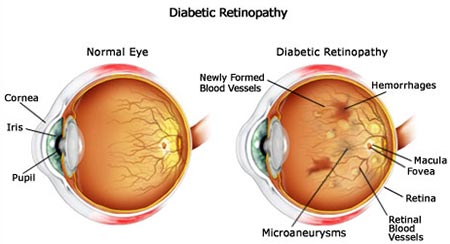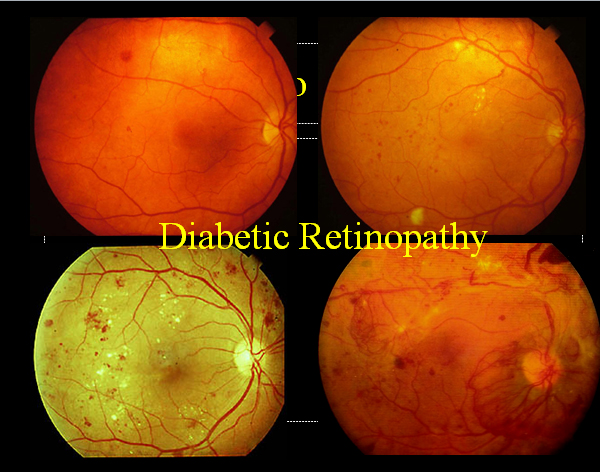Diabetic Eye Disease
Diabetes causes microscopic damage to the blood vessels all over the body. The small blood vessels that provide nutrition and oxygen to the retina are particularly affected. When diabetes causes damage to the blood vessels of the retina, it is called “diabetic retinopathy.” Diabetic retinopathy can range from mild to severe forms.


Some patients with diabetic retinopathy do not experience any vision problems. Only by examination of the retina can the damage, such as small areas of bleeding, be detected. If the disease becomes more severe, the blood vessels of the retina can leak fluid causing “edema” or swelling of the retina. When the swelling affects the center part of the retina, called the “macula,” vision can be affected causing blurring or distortion. Treatments for macular edema (or swelling) are offered in our office that can reverse the effects and restore vision.
 In some patients with very severe diabetic retinopathy, abnormal new blood vessels can form in the eye. These abnormal blood vessels can cause sudden bleeding in they eye which can result in abrupt loss of vision (vitreous hemorrhage). These abnormal blood vessels can also form scar tissue inside the eye that can result in detachments of the retina and further vision loss. Medical treatments, laser procedures and surgery are offered in our office depending on the severity of the disease to reverse these effects.
In some patients with very severe diabetic retinopathy, abnormal new blood vessels can form in the eye. These abnormal blood vessels can cause sudden bleeding in they eye which can result in abrupt loss of vision (vitreous hemorrhage). These abnormal blood vessels can also form scar tissue inside the eye that can result in detachments of the retina and further vision loss. Medical treatments, laser procedures and surgery are offered in our office depending on the severity of the disease to reverse these effects.
All patients with diabetes should undergo at least yearly examinations of the retina to check for diabetic retinopathy. All patients with diabetic retinopathy should work closely with their primary care doctor or diabetes doctor to control their blood sugar and blood pressure.
